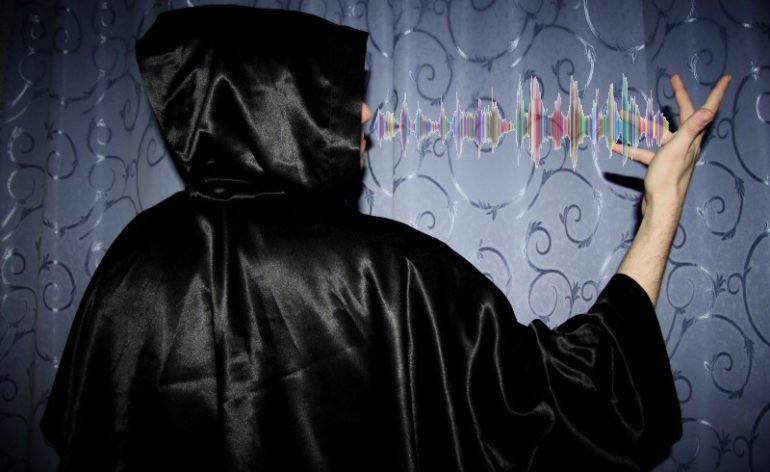To the Audiophile, Magic is Real
Have you ever had a discussion with someone who clearly thought they were an expert in their hobby? The kind of person that has just enough knowledge to sound like they knew what they were talking about? The longer you talk with them, the more obvious it becomes that they might talk the talk, but they don’t really understand the fundamentals. They may know all the lingo, but they refuse to understand the science. As they talk, it sounds more and more like they believe in magic. That’s the audiophile. In order for the claims of audiophiles to be real, magic must exist. Let’s look at some of their claims and why their minds can’t be changed.
Electricity Works Different for the Audiophile

Audiophiles have a lot of beliefs. One of the most fundamental is that every piece of gear in your system affects the sound you experience. Every. Piece. This includes speaker cables, interconnects, and power cords along with the sources, speakers, and other electronics. Most non-AV enthusiasts will just shake their heads as the audiophile tries to explain how their +$1000 aftermarket power cord for their preamp somehow changed the sound in their system. It doesn’t make sense! How can the last four feet of cabling change the electricity that has spent miles in wires from the power station? Can a power cable make an audible difference?
It can’t. Unless you believe in magic like the audiophile.
Same with speaker cables. How can a speaker cable make anything other than a negative impact on the sound in your system?
Again, it can’t.
The audiophile will have all sorts of explanations. Skin effect, cryogenically frozen cables, silver interconnects…the list goes on. And some of these terms are real things. Skin effect is a thing. It doesn’t apply to wire runs as short as those in your home theater. It doesn’t apply to wires as thin as those in your home theater. But it is a thing. When you ignore the science and don’t look too closely at the claims, it almost makes sense. Until you read just a little more. And then the argument falls apart.
We’ve seen speaker cables with arrows on them. As if electricity was directional. We’ve seen cable elevators that bring your cables off your carpet because audiophiles are afraid that the static electricity (and vibrations and a bunch of other stuff) will create interference? We’ve seen esoteric cables with batteries built in, strange insulating materials, and more. Most people would look at these things and think, “That can’t possibly make any difference.” Unless it was audiophile magic.
Room Acoustics Don’t Apply to the Audiophile

One thing that can and does make a difference in the sound in your home theater is your room. The way the sound waves interact with your room can have a huge effect on how good your system sounds. Have a room with nothing but hard, flat surfaces? The sound will be bouncing all around like you were in an empty auditorium. Do the “clap” test (actually clap in your room). Do you hear an echo or reverberation? That is your room affecting the sound.
For whatever reason, most audiophiles reject the room as being part of the sound they hear. Their belief is that they can change the sound they hear by swapping out cables and DACs and other components. If they do start to agree that the room might be making a difference, they’ll rarely do much more than add one audiophile device that will magically absorb all the reflections regardless of where it is placed in the room.
There is so much science on the room and its effects on sound at this point, the audiophile must actively avoid it not to be aware of its existence. It’s not hard to understand either. But it is easier for the audiophile to believe that one absorber (or device) will do everything they want because all their other devices make such a difference. If their one absorber doesn’t do the job, the solution isn’t to add another (or a bunch more, as science suggests), it is to swap out the one they have with another (probably more expensive) one.
As swapping out one component for another has been the audiophile modus operandi since time immemorial, this makes sense to the audiophile mind. Even a cursory glance at the science, or spending a few minutes thinking about how waves work, would disabuse the audiophile of their magical beliefs. But they won’t spend that time. If they accept one aspect of science, it means they might have to look at other scientific claims. If they do that, they’d have to reevaluate all their beliefs.
The Psychology of Audiophile Magic

Much like audiophile reviewers, the belief in magic can be traced back to psychological reasons. First, the budding audiophile discovers high-end audio. They start reading reviews. They start saving for gear. And then they buy some gear. It doesn’t sound as great as they were hoping. Did they waste their money? Were they duped?
They take to the forums (or they continue reading more audiophile reviews). No, their audiophile groomers claim! They didn’t waste their money! They just need a new power cable or DAC or something else. The audiophile groomer had the same problem and swapping out a cable made all the difference.
Off goes the budding audiophile to buy more and more gear. Gear that is progressively more expensive. Pretty soon, they are in for thousands if not tens of thousands of dollars. Trying to convince that person that their purchases were a waste of money is much harder than convincing them that audiophile magic is real.
Why? Because you not only have to convince them that there is no science behind any of these purchases, but also that they were dumb enough to be duped by other people. Psychologists call this cognitive dissonance. This is when you hold two conflicting beliefs. To the audiophile, they already hold the belief that they are not a sucker, and then they are reading (or hearing) that their expenditure of money suggests that they are. That creates a lot of internal discomfort. They have to resolve it in some way. Either they admit that they made a mistake, or they double down and look for more reasons why they were right in the first place.
Which does the audiophile choose?
The Null Hypothesis and the Audiophile Mind

In the end, the real problem is that there is no arguing with the audiophile. Not because of magical thinking, but because audiophiles don’t understand statistics. When studying an effect, there is something called the null hypothesis. While the null hypothesis can be anything, in audio, it is often “there was no difference.” So, when the audiophile makes a claim that a power cord made an audible (and often claimed “obvious”) difference, the null hypothesis is always that it did not (the “nuh-uh” hypothesis).
The problem with the null hypothesis is that you don’t prove that it happened. You prove the alternative hypothesis (in this case, that there was a difference). In statistics, you NEVER prove the null hypothesis. You only reject the alternative hypothesis. So, in our case, you could do a test where you set up two identical systems that could be switched with a push of a button. One has a different power cord (or amplifier, or digital cable, etc.) than the other. If listeners (or the audiophile) can pick the difference out enough times, the alternative hypothesis is accepted.
You might think that the null hypothesis is disproven at that point. Most people would agree. But in statistics, that is not true. The statistician would say that in the particular test, the alternative could not be rejected. Not that a different test couldn’t reject it. It would only be after a number of tests run in different ways, by different people, failed to reject the alternative that a statistician would start to say that the alternative might be true.
If the test went the other way and no difference could be detected, they would not say that the null hypothesis was “proved.” Instead, they would say that the alternative could not be accepted. No matter how many tests were conducted, they would never say that the null hypothesis was proven. Because you can only “prove” the alternative.
Confusing, I know.
What this means in our case is that the onus is always on the audiophile to “prove” that their outrageous magical claims are true. Of course, the audiophile has no motivation to do so. Why would they? They can HEAR it! If you can’t, then it is your ears! Plus, if they took part in such tests, they might find that they really didn’t hear anything. And that is not a risk they are willing to take.
Conclusion
The audiophile doesn’t need science to back up their magical claims. They have their beliefs, their ears, and their experiences. Why would they need science to “prove” what they already know? Audiophile magic might just be psychological pressure, but it is real to them. So, is that enough?
To me, it is. I have no problem with people spending their money on things that I think are worthless. People have all sorts of hobbies that I think are ridiculous. If it gives them joy, more power to them. I only take umbrage when the audiophile shows up and starts to insist that their magic overrules my science. If you are going to say that, you better have some evidence to back up your magic. Because I’ve got plenty to back up my science.



Great article! Typo in the last sentence!
Doh! Thanks! Great catch!
If you rant acually understood electrikery (ask an EE if in doubt) Then you would know the applicable electrial circuit is from the power companies local transformet to your home. The tens to hundereds of miles of Very High Voltage pylons have nothing to do with it. It is a porly constucted logical falacy by those naysayers who also don’t understand the engineering. Dirty mains and poorly designed equipment can affect the sound, this stuff is totally mesureable, as are the charateristics of speaker cables and noise immunity of interconnects. No piece of copper/silver or gold is worth $$$$+, but engineering does define its parameters… Vibrational control is also a known science.. The fact that a lot of people not just audiophiles have a total lack of understanding of sceince, is par for current and past decades of the state of education. Result: the PJ Barnham’s of this world will sell them anything. from magic rocks to quantum stabilzers. The rest of the article is quite resonable.
Dirty power can be a thing. It is not a thing that is solved by an aftermarket power cord. Vibrations are also a thing. It is not a thing that is fixed by elevating your cables.
Tom, my late brother had a term for people this. “They know enough (of any subject) to be dangerous.”
To add, not all audiophiles are beyond hope. Some, even many become recovering audiophiles. They begin to understand quality differences between gear but they also learn to better filter out snake oil. Though I never considered myself a true audiophile, I have fallen into audiophile traps at times. Thankfully my general beer budget helps preclude me from being permanently ensnared in said audiophile traps.
Oh P.S.
A bit of politics here DO NOT READ ON IF NOT INTERESTED 🙂
The Null Hypothesis looks to work on anthopogenic climate changers too. You can show them facts and historical evidence to the contrary of their (actually not science backed) hypothesis and they will still think we are going to destroy earth and maybe within 12 years. 🙁
Intro to statistics should be required learning
Ok carry on, I didn’t say Vibrations are a thing that is fixed by elevating your cables And it is true not one audiopile power cable maker, has ever published noise reduction figures for their wares. Diferent cable constuctions do change the AC parameters! Which “may effect” interactions and crosstalk of noise from one piece of equipment to the other, that said they don’t need to cost a lot.of money. Just don’t make the mistake of thowing the baby out with the bath water. it reduces your credability..
The OP doesn’t seem to know audiophiles as well as he thinks he does. I’ve never met an audiophile who was unaware of how important his room is in affecting the sound of his system.
And no, we don’t all rush out and buy room treatment. Most of us add rugs or furniture till we deaden reflections sufficiently.
Granted, there are some who will happily throw money at any crazy gadget that is supposed to have a magical effect on their system.
The rest of us however, are a lot more level-headed.
As a “high-end” manufacturer of audio components, GAS Co. was continually approached by “golden-eared audiophiles” claiming the amplifier or preamplifier they owned clearly sounded superior to any of the GAS Co. products we were producing. I would always invite these individuals into the sound room with their preferred audio component and proceed to connect it to the switching system. I would have them select a comparable GAS Co. component that I also connected to the system and then carefully adjusted both components with a precision AC voltmeter for equal levels.
Before the testing commenced, I would give the audiophile the remote lanyard–a small handheld box with a toggle switch labeled A or B. I always told them that the “A” position was their piece of equipment and the “B” position was the GAS Co. equipment. After exhaustively auditioning the two components, the golden eared individual would always have a litany of subjective terms that negatively described the sound of the GAS Co. component such as: “overall dullness”, “lack of transparency”, “ill defined bass”, “irritating midrange”, “shrill highs”, “lack of depth”, “unstable imaging”….. ad nauseam.
While the audiophile was espousing these opinions, I would bring the level of the music back up, then casually walk over to the components, switch off the power to the GAS Co. component and ask the audiophile to please toggle the lanyard switch between A and B.
Unbeknownst to the audiophile, I had connected the switching system exclusively to their component only. During the test when they switched from A to B, the sound audibly dropped-out during the switching process for a few milliseconds cueing the listener that something had changed. When the audiophile realized that I had clearly demonstrated that their golden ears were not golden at all, they would quickly disconnect their component from the system, and while stomping out of the listening room, turn around, and, depending on how invested they were in believing they had golden ears, generally espouse a litany of profanities directed at me. Don’t shoot the messenger!
I repeated these same A/B listening tests many times with various individuals and groups and determined there was a direct correlation between audiophiles and lovers of music; audiophiles were always angered; music lovers were always enlightened, especially women! This same switching system was also utilized for loudspeakers and phono cartridges since GAS Co. was selling “Sleeping Beauty” “moving-coil” phono cartridges made by Coral Corp. in Japan. There was no need try to fool the listener as I did with electronics, switching between different loudspeakers and phono cartridges always produced easily discernable audible changes in the musical timbre characteristics.